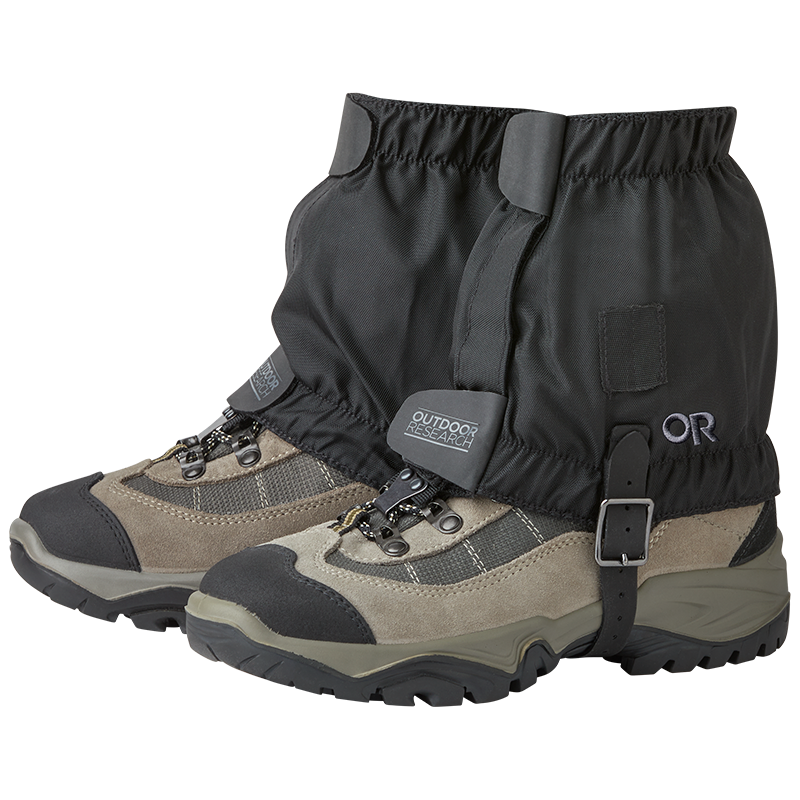
Whether you’re an experienced hiker or you’re new to the game, you’ll certainly want to check out Peak Planet’s equipment rental list as well as their recommended gear list as you plan your climb.
Climbing Kilimanjaro is a truly unique experience in that you’ll need to prepare for virtually all possible weather conditions from hot and humid to cold and arid, so having the appropriate gear and a multitude of layer options, whether rented or purchased, is of vital importance. An oft overlooked item on the gear list are gaiters. In fact I, myself, did not wear these on my Kilimanjaro climb, and found myself missing them on multiple occasions.
If you’re unfamiliar with what gaiters are, they basically eliminate the gap between bottom of you pants and the top of your boots. This serves a number of crucial purposes. Early in the climb, they will prevent mud, rocks, and even rain from entering your boots. Later in the climb, as you ascend into the lunar desert and arctic climate regions of Kilimanjaro and transition to long pants, they will not only keep out dust, dirt, and rocks, but the penetratingly cold air as well.

On summit night this seemingly inconsequential piece of gear could prove the difference-maker as you very slowly ascend into the coldest stretch of the entire journey. For six to eight hours, you’ll be openly exposed to frigid temperatures and wind. Keeping your feet and ankles warm and the entire body comfortable in those extreme conditions may come down to having this small piece of gear at the ready.
There are a variety of available options in the realm of gaiters.
Low gaiters provide minimal coverage. They attach to your boots with a strip of Velcro and hook onto the laces, and rise just above the ankle. Typically, they’re lightweight and made of thin but durable materials.
High gaiters provide much more coverage. They fasten with a buckle under your boots, hook attach to your laces, and rise just below the knee. They are usually made of heavy-duty, waterproof materials.
Additionally, there are also mid-rise gaiters that fall somewhere in between the first two choices, stopping just below the calf.
All options effectively serve their intended purposes, and will more than do their job in keeping out the pesky dust, dirt, and gravel, however the taller ones will much better serve to keep out that frigid air as you climb above the clouds toward the summit.
If I were climbing Kilimanjaro again, I’d likely bring low and high gaiters, as the shorter ones are much more easily worn with shorts and weigh next to nothing in your pack, while the heavy-duty ones will do the best job of keeping your legs and feet warm on summit night.
Should you elect to go with only one of these choices, I recommend using high gaiters. This is what most people wear climbing Kilimanjaro, if they are wearing gaiters at all. I want to re-emphasize that gaiters are not required, but they do help. High gaiters offer ample coverage to keep debris, rain, and snow out of your boots, and will also provide that much-needed insulation from the cold when you need it most.

A client with high gaiters summits on a cold, snowy day
Whatever option or options you ultimately choose, I’d strongly urge getting in some good practice trying them on and walking with them prior to the start of your climb. The last place you want to be learning how to use or wear any of your gear is on the mountain where every small exertion is noticeably amplified by the increasing altitude.
Familiarizing yourself with not just your gaiters, but with all of your gear ahead of the climb will help prevent making an already difficult undertaking more challenging. Tip of the cap to you, oh fearless climber, for you have done the research necessary to spare yourself the inconvenience of having to sit somewhere along the trail to fetch a jagged, volcanic rock from the depths of your boots, and you will be granted the luxury of warm(er) feet as you make your final push to the roof of Africa!





